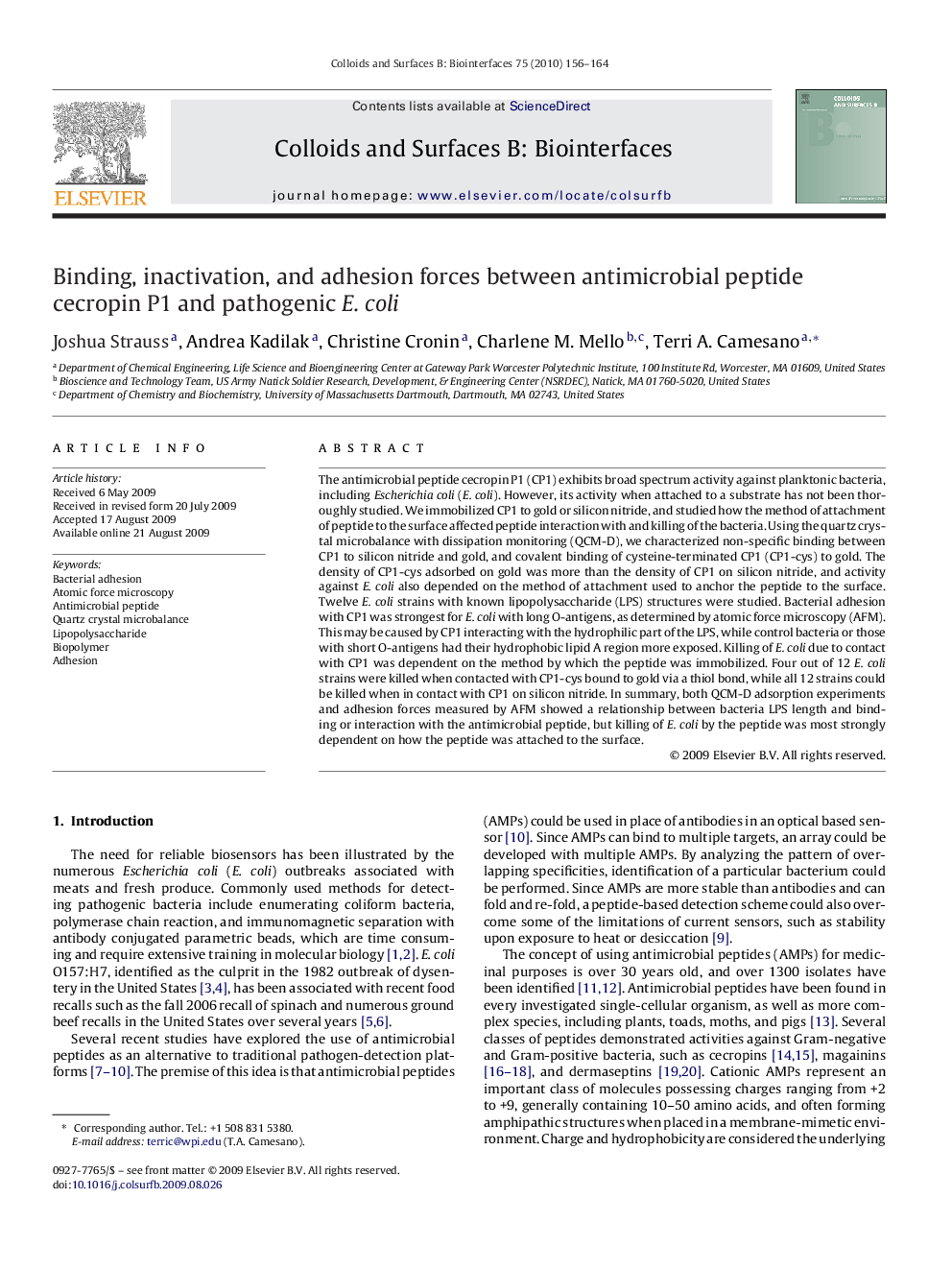| کد مقاله | کد نشریه | سال انتشار | مقاله انگلیسی | نسخه تمام متن |
|---|---|---|---|---|
| 601952 | 879959 | 2010 | 9 صفحه PDF | دانلود رایگان |

The antimicrobial peptide cecropin P1 (CP1) exhibits broad spectrum activity against planktonic bacteria, including Escherichia coli (E. coli). However, its activity when attached to a substrate has not been thoroughly studied. We immobilized CP1 to gold or silicon nitride, and studied how the method of attachment of peptide to the surface affected peptide interaction with and killing of the bacteria. Using the quartz crystal microbalance with dissipation monitoring (QCM-D), we characterized non-specific binding between CP1 to silicon nitride and gold, and covalent binding of cysteine-terminated CP1 (CP1-cys) to gold. The density of CP1-cys adsorbed on gold was more than the density of CP1 on silicon nitride, and activity against E. coli also depended on the method of attachment used to anchor the peptide to the surface. Twelve E. coli strains with known lipopolysaccharide (LPS) structures were studied. Bacterial adhesion with CP1 was strongest for E. coli with long O-antigens, as determined by atomic force microscopy (AFM). This may be caused by CP1 interacting with the hydrophilic part of the LPS, while control bacteria or those with short O-antigens had their hydrophobic lipid A region more exposed. Killing of E. coli due to contact with CP1 was dependent on the method by which the peptide was immobilized. Four out of 12 E. coli strains were killed when contacted with CP1-cys bound to gold via a thiol bond, while all 12 strains could be killed when in contact with CP1 on silicon nitride. In summary, both QCM-D adsorption experiments and adhesion forces measured by AFM showed a relationship between bacteria LPS length and binding or interaction with the antimicrobial peptide, but killing of E. coli by the peptide was most strongly dependent on how the peptide was attached to the surface.
Journal: Colloids and Surfaces B: Biointerfaces - Volume 75, Issue 1, 1 January 2010, Pages 156–164